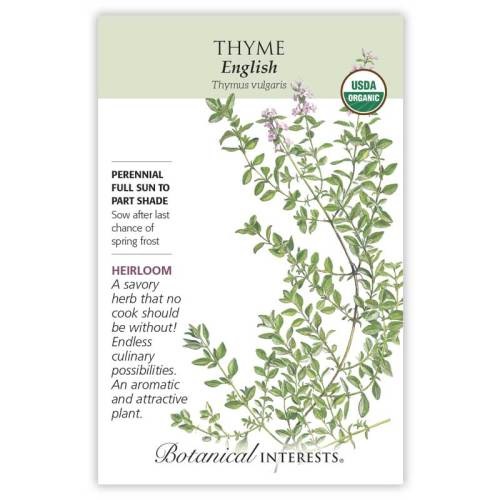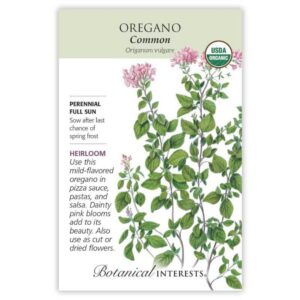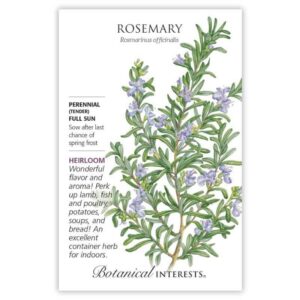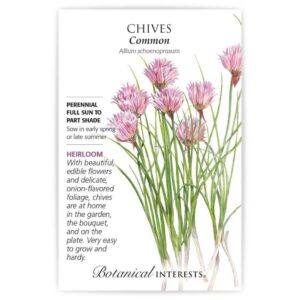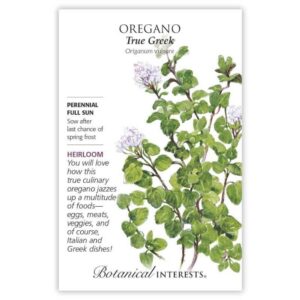Description
English Thyme (also known as Thymus vulgaris) is an essential kitchen herb with a subtle, woodsy flavor that enhances a variety of dishes. Often used in Herbes de Provence, thyme’s small, fragrant leaves and delicate white to light pinkish/purple flowers make it an attractive addition to any garden. Grown as a perennial in USDA zones 5–9, English Thyme reaches heights of 6″–12″ and is perfect for containers or as a low hedge around herb or vegetable gardens. It’s a drought-tolerant and deer-resistant plant that attracts pollinators, adding beauty to your landscape.
This packet sows up to 233 feet. 1,400 seeds.
Variety Info:
Botanical Name: Thymus vulgaris
Family: Lamiaceae
Native: Africa and Western Europe
Hardiness: Perennial in USDA zone 5–9
Plant Dimensions: 6″–12″ tall and wide
Variety Information: Very small (¼”), very fragrant leaves with white to light pinkish/purple flowers in early summer. Evergreen herb used in cooking and for ornamental purposes. Essential in Herbes de Provence.
Exposure: Full sun to part shade
Attributes: Attracts Pollinators, Drought Tolerant, Deer Resistant
Sowing Info:
When to Sow Outside: 1 to 2 weeks after average your last frost date, and when soil temperature is at least 68°F.
When to Start Inside: RECOMMENDED. 6 to 8 weeks before your average last frost date. Ideal soil temperature for germination is 70°–80°F.
Days to Emerge: 10–15 days
Seed Depth: 1/8
Seed Spacing: A group of 3 seeds every 10″
Row Spacing: 12″
Thinning: When 1″ tall, thin to 1 every 10″
Growing Info:
Harvesting: Pick sprigs as you need them. Shear the whole plant 4″ above ground if growth is spindly; new growth will be denser. Do not cut into the woody part or prune heavily in fall; it may adversely affect winter hardiness.
